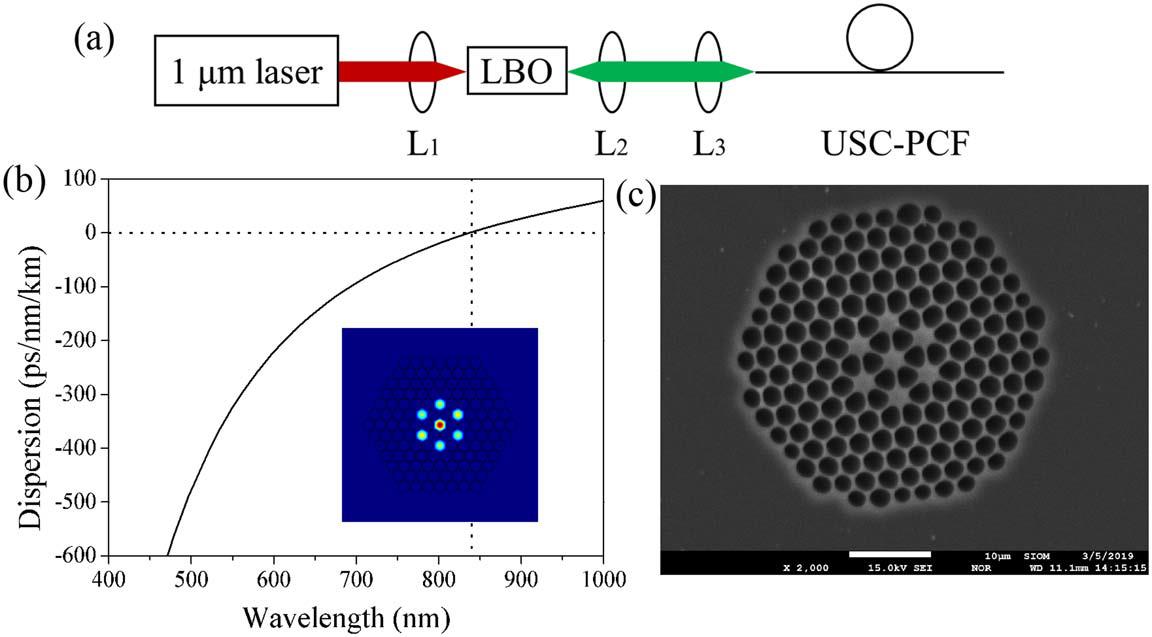White light laser, which is also common known as supercontinuum (SC), is encountering a great quantity of applications in recent years. The SC characterizes both good beam quality and broadband wavelength coverage. Provided that the SC emits a high level of energy covering the entire visible wavelength band, it looks like a white light laser. It is applicable for the probe for transient absorption spectroscope, endoscopy illumination, miniaturized endoscopes as well as hyperspectral light detection and ranging.
Typical method for developing the white light laser is to pump a mono-core photonic crystal fiber (PCF) with ytterbium doped laser amplifier at ~1030 nm. The pulse of 1030 nm can extend the frequency itself due to nonlinear phenomena such as self-phase modulation, four wave mixing and Raman solitons.
In a recently work from Shanghai Institute of Optics and Fine Mechanics, Chinese Academy of Sciences, scientists efficiently generated a micro-joule level SC covering 400–900 nm in a seven-core PCF with frequency doubled ytterbium pump laser. The result was published in Optics Letters.
In their experiment, a fiber laser with a wavelength of 1030 nm and pulse width in nanosecond level was chosen to provide a high-energy pulse. The second harmonic of the fiber laser with a center wavelength at 515 nm was obtained through a LBO (LiB3O5) crystal. The uniform seven-core PCF (USC-PCF) and the tapered seven-core PCF (TSC-PCF) that contain a transition fiber and a meters-long small core fiber with the same core diameter as a USC-PCF were fabricated.
When pumped by a 515 nm laser, SCs covering 400 to 900 nm were generated in both PCFs. A maximum SC energy of 4.24 μJ was obtained in a USC-PCF. For the TSC-PCF, the larger end of the transition fiber was used to reduce the possibility of fiber damage when coupling light into the fiber. The small core fiber was used to generate an SC.
In the TSC-PCF, a dispersive wave in a short wavelength band was excited when the Raman peaks were extended into long wavelength bands. Up to 15th-order cascaded Raman peaks were observed during the SC evolution process.
Previously, the pulse energy of the SC in a visible band obtained in a multicore PCF was mostly less than 1 μJ. This novel work can enhance the power handling ability and energy transferring efficiency and is able to raise the record substantially.

Fig. 1 (a)the experiment setup; (b)fiber dispersion and mode distribution; (c) fiber endface 
Fig.2 (a) the spectra of generated supercontinuum; (b) picture of the fiber; (c) beam spot
Article website:
https://www.osapublishing.org/ol/abstract.cfm?uri=ol-44-20-5041
Contact:
Mr. CAO Yong
General Administrative Office
Shanghai Institute of Optics and Fine Mechanics, CAS
Email: caoyong@siom.ac.cn